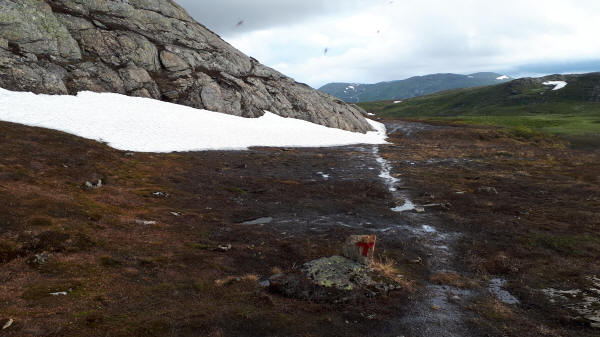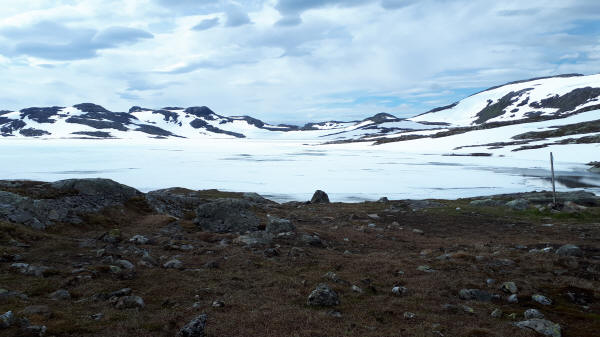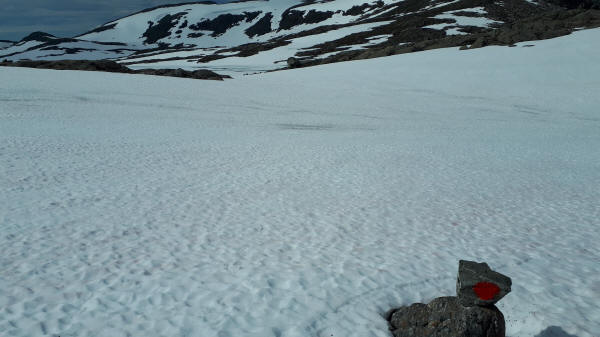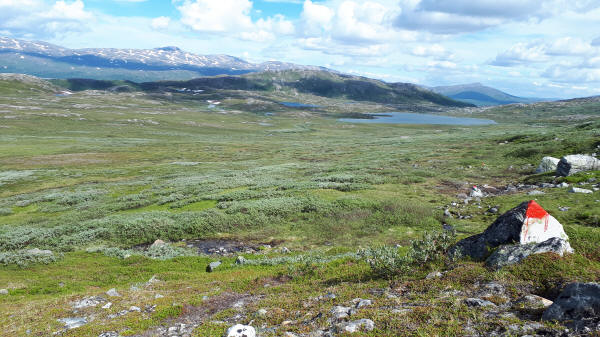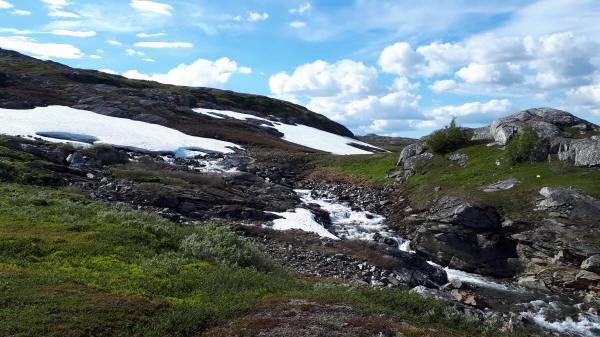E1 Norway Umbukta - Abisko

Ib.1 Section Umbukta - Kvitsteindalstunet 26 km
I was the only one staying for the night at the Fjellstua. The restaurant I remembered from two years ago was closed due to corona. Thats why I took care of myself in my room. I started early. Soon I noticed that Norway had a lot of snow fall in late spring. The river I followed in the beginning had much more water than I recalled from the last time. Soon I came by the first snow remnants. Before arriving at DNT-Sauvasshytta I had to cross the inlet of Lake Sauvatnet. There is a bridge to cross the river which consists of two steel beams without any railing. I should allow for getting across in dry shoes. On one side it was barely possible to get to the wet beams without getting wet. On the other side one ended up in deep water. I searched for a better site to wade through the river. The final climb to hut was across snow fields. There where two hikers in the hut. Outside I stopped for lunch in the sun looking at Lake Östre Sauvatnet which was still frozen over in end of July.
Soon I descended into Valley Ivakskardet. Last time it was a hardly marked trail across scree. Now it was a steep descent across a large snowfield without any markings sticking out. It was slow walking down the snow field. Finally being down I continued along the slopes of Mjelkfjellet while having a great view of Lake Kallvatnet. In the evening I arrived at the DNT-hut Kvitsteindalstunet. In this corona year DNT-huts had to be booked in advance. Only I single group or single hiker was allowed to stay for the night. Until Krukistua I had booked Being all by myself in this big hut was rather unfamiliar.
Wet and marked E1 with snow remnants
Bridge is supposed to cross the river and not to lead into the river
Lake Östre Sauvatnet at Sauvasshytta was still frozen at end of July
Descent across rather long and steep snow fields into Ivakskardet Valley
Well marked but little hiked E1
Creek at E1 is running strongly
